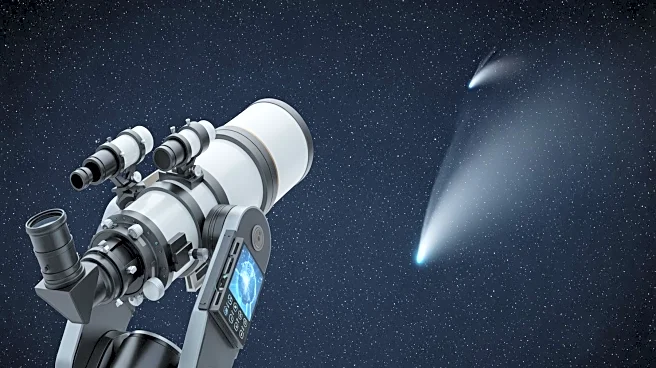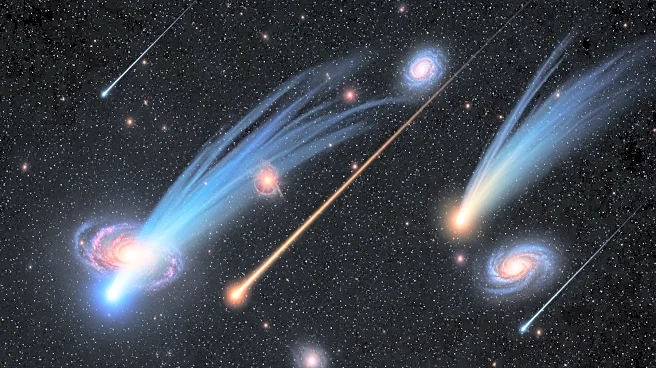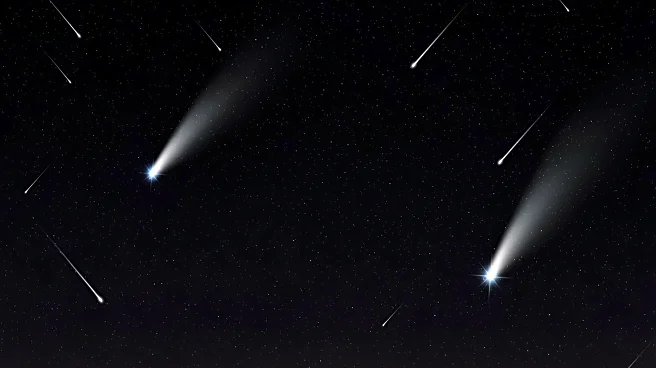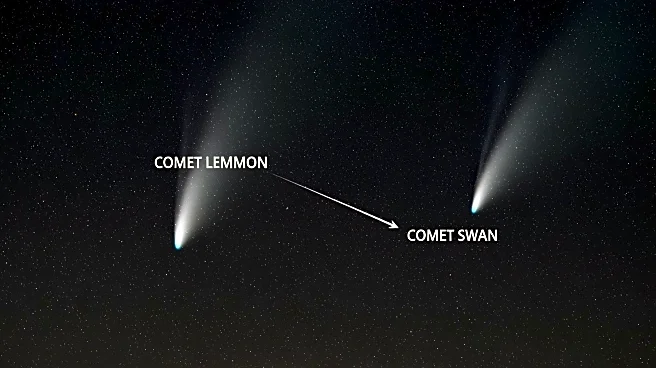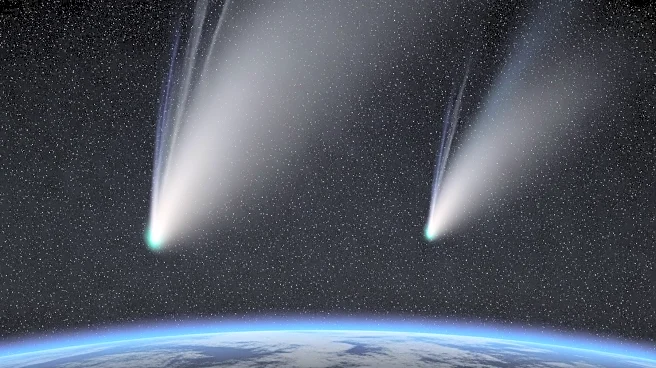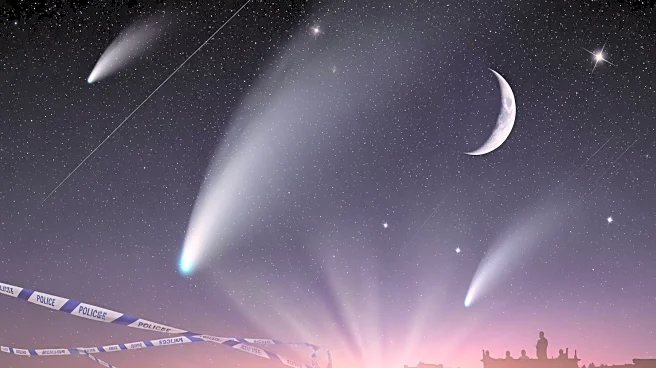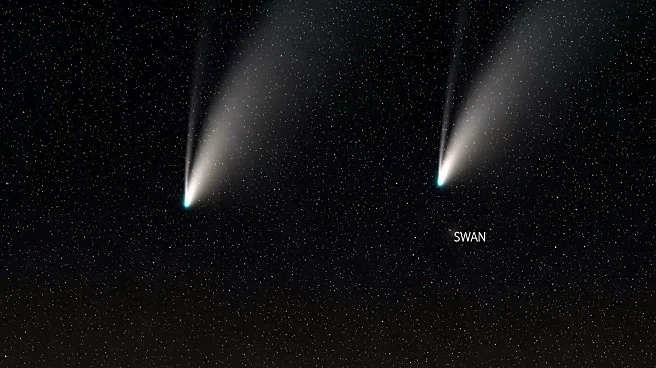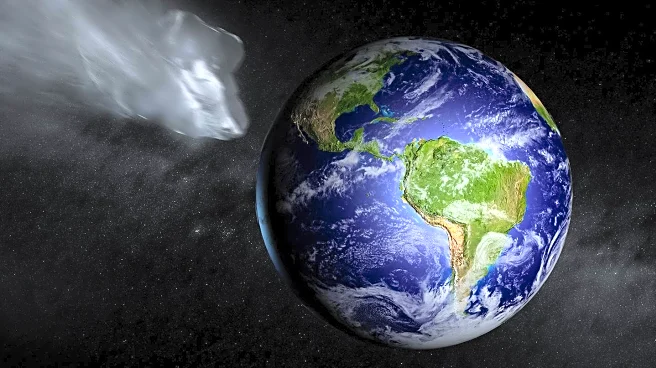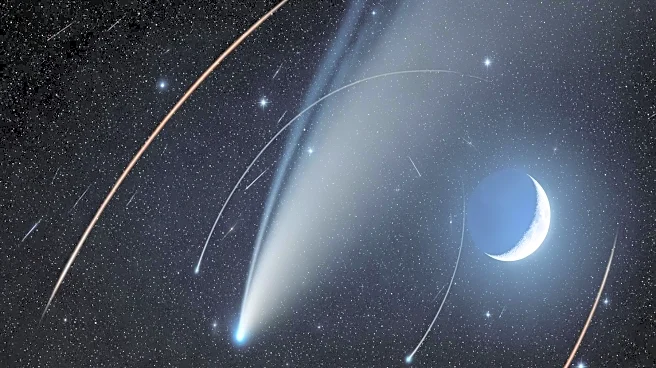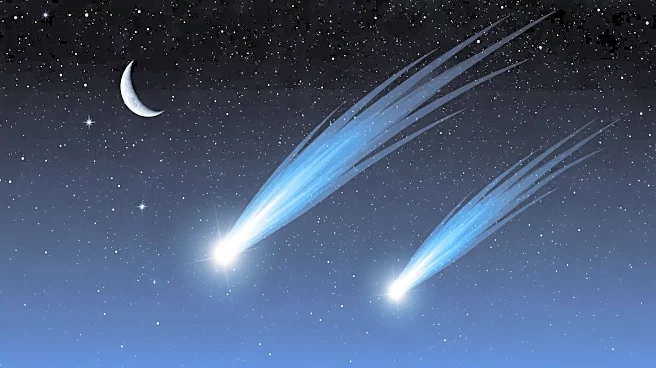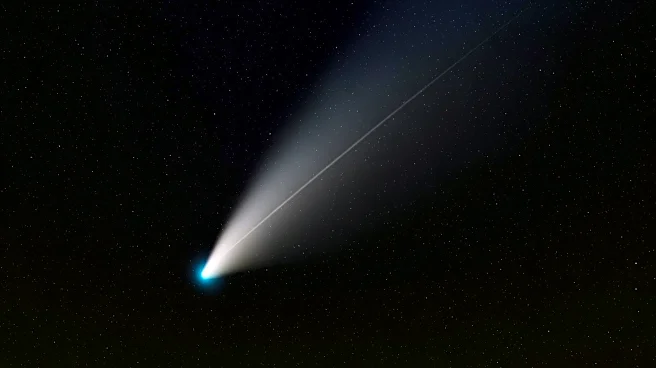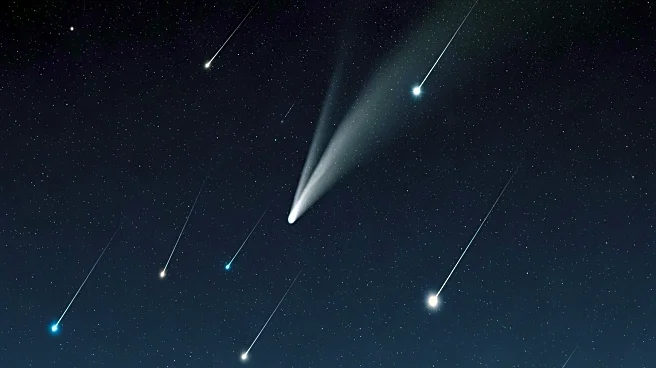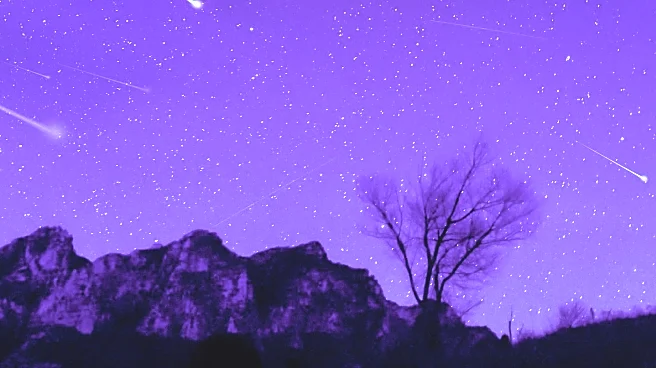What's Happening?
Two comets, C/2025 A4 (Lemmon) and C/2025 R2 (SWAN), are set to make their closest approach to Earth, providing a rare opportunity for observation. The Virtual Telescope Project, led by astronomer Gianluca Masi, will host a live stream of this event on October
20, starting at 1:30 p.m. EDT. Comet Lemmon will pass approximately 56 million miles from Earth, while Comet SWAN will come even closer at about 24 million miles. Both comets are expected to reach peak brightness between October 20 and 21. Comet Lemmon, discovered in January 2025, is visible in the western evening sky, while Comet SWAN, discovered in September 2025, is best viewed in the predawn sky.
Why It's Important?
This event is significant for both professional astronomers and amateur stargazers, as having two comets visible simultaneously is a rare occurrence. The live stream offers a unique opportunity for global audiences to witness this celestial event, potentially sparking increased interest in astronomy and space observation. The proximity of these comets allows for detailed study, which could provide insights into the composition and behavior of such celestial bodies. This event also highlights the capabilities of modern technology in bringing space phenomena closer to the public, fostering a greater appreciation for space science.
What's Next?
Following the live stream, astronomers and enthusiasts may continue to observe the comets as they move through the sky. The Virtual Telescope Project and other observatories might release further analyses and images, contributing to ongoing research. The event could lead to increased public engagement with future astronomical events, encouraging more people to participate in skywatching activities. Additionally, the data collected during this close approach could be used in future studies of cometary behavior and solar system dynamics.
Beyond the Headlines
The event underscores the importance of international collaboration in space observation, as projects like the Virtual Telescope Project rely on contributions from astronomers worldwide. It also highlights the role of technology in democratizing access to space phenomena, allowing people from various backgrounds to engage with and learn about the universe. This democratization could inspire future generations to pursue careers in science and technology, contributing to advancements in these fields.
